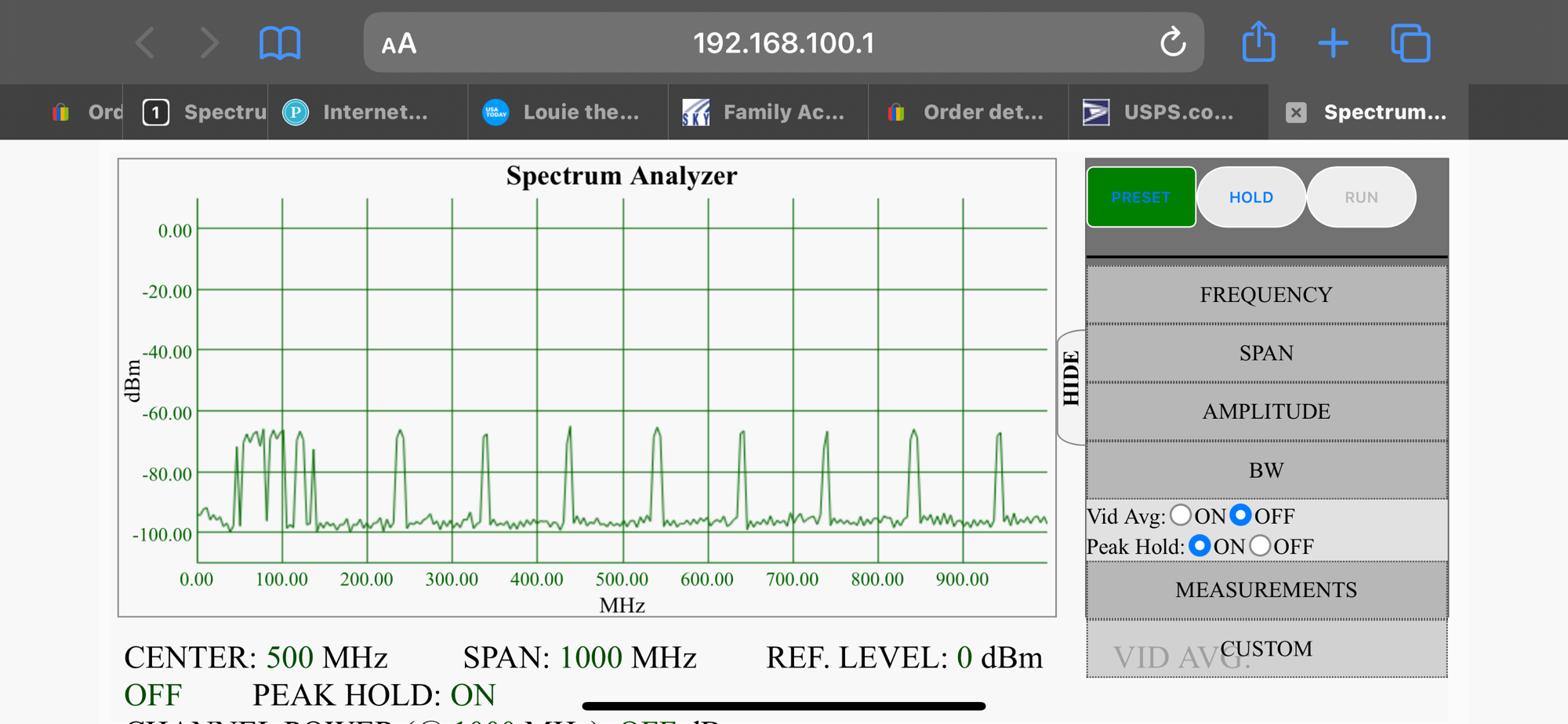I actually hit the front page of hackaday writing about this one, and I’m still being honest that this was NOT my discovery, I just made a few observations about it, and maybe put it to a practical use –
KC9UMR on the Cable Modem SpecAn
Well, since I tried this, I’ve been toying with the idea of putting it on my network and making it accessible without messing with the network settings for the PC I’m currently using. This has a couple of possible applications- either branch mounted, or maybe in a high spot in the house for overall spectrum viewing.
The problem is one of the cable modems internal DHCP server. I don’t need it messing up the rest of my network. Additionally, I know that there are vulnerabilities in these devices that are coupled to the spectrum analyzer function (and thus many ISPs locking it out).
My first thought was to stick a Pi zero in the case, hardwire the Ethernet port, and then have it connect on wifi. I’m sure there would have been a lot of configuration to make the pi do routing and whatnot. But that would have added boot times and uncertainty.
People told me VLANs were the way to go. I knew the basic concept but not the details on how to set up VLANs. So I went off to the forums for my router and started asking. That yielded little info, but ultimately I needed to investigate this on my own… and it actually worked. I directed that port 3 on the micro switch on my desk was a vlan port set for 192.168.100.0, was not fully isolated or a guest network (but was cut off from the internet), and I was all of a sudden able to log in from any computer on the network!
As an extra bonus, I noted one other thing. Two computers could log in at the same, and have completely different views of the data, for example, one computer could be watching only the 2 meter ham band, and another could be watching the whole spectrum without affecting each other- it turns out the browser is doing the data reduction…. The modem is doing its thing all the time no matter what.


On a whim, I fired up my HackRF, wired in a couple 20dB attenuators, and decided to see how flat of a response I got… turns out it’s very flat, but reports about 10dB low. I’m not sure if my hackRF is dead on or even how good my attenuators and cables are, so take that with a grain of salt.




And to make sure it wasn’t a bad attenuator, I swapped all three 20 db attenuators and got the same results- about 6db low.
While I was at it, I put all 6 attenuators in to look at the units sensitivity. -120dBm was down below the noise floor, but -100 was noticeable- I’d guess the minimum discernible signal to be about -106 dbm or so- pretty close to 0 dBuV, so not too shabby, for a closed loop.


Now, when I put an antenna on, the noise floor shape changed dramatically as it pulls in environmental noise… but that should be true of any analyzer.
It’s not a Keysight or a Rohde&Schwarz, but Hey, I have a network connected spectrum analyzer, and it only cost $5!
